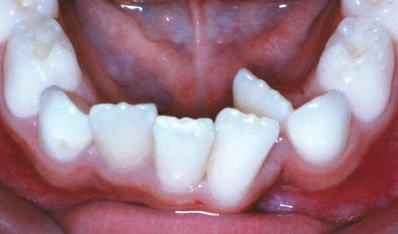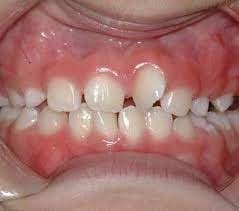Early Treatment (Phase I)
Start Strong with Early Orthodontic Care
Early treatment, also known as Phase I Orthodontics, is designed for children between the ages of 7 and 11. This critical stage in your child’s development is an opportunity to guide jaw growth, create space for adult teeth, and address issues like overcrowding or jaw misalignment before they become more complex. Early intervention not only prevents future problems but also sets the foundation for a lifetime of healthy, confident smiles.
“At Wright & Feusier Orthodontics, we strongly believe in prevention. Early care allows us to give your child the best chance for a beautiful, healthy smile while simplifying treatment later on,” explains Dr. Chad Wright.
Why Early Orthodontics?
You might have noticed that more children are getting braces at younger ages. While it’s easy to assume this is just a trend, it’s actually rooted in research. Until about 30 years ago, the standard approach was to wait until all baby teeth were gone, typically around age 12 or 13.
However, by that age, the parts of the mouth that orthodontics can influence—like the jaw and dental arches—are mostly done growing. This means fewer options for treating crowding or misalignment.
“If we wait too long, the only solution for severe crowding may be permanent tooth extractions,” says Dr. John R. Feusier. “By starting early, we can modify jaw growth and prevent those situations entirely.”
What Happens During Early Treatment?
At Wright & Feusier Orthodontics, we customize each child’s treatment plan to meet their unique needs. Early treatment often includes:
Comprehensive Evaluations: We assess your child’s teeth, jaw, and growth patterns to identify potential issues.
Age-Appropriate Appliances: Gentle orthodontic tools like expanders or partial braces are used to guide development.
Habit Correction: Addressing harmful habits like thumb-sucking or improper tongue and lip postures that can impact oral health.
What Are the Benefits of Starting Early?
Starting treatment at the right time can lead to better results and fewer complications. Here are some of the key benefits:
Creating Space for Permanent Teeth: Prevent overcrowding by guiding jaw growth.
Improving Facial Balance: Address asymmetries that become harder to correct with age.
Enhancing Self-Confidence: A healthier, straighter smile boosts self-esteem at an important stage of life.
Preventing Tooth Damage: Protruding teeth are less likely to be injured during play or accidents.
Avoiding Future Surgery: Treating jaw issues early reduces the need for surgical intervention later.
Improving Airway Health: Expanding the dental arches can help increase the airway, improving breathing and sleep.
Our Philosophy on Early Treatment
We understand that every child is different. Not all children need early orthodontic treatment, and if it isn’t necessary, we’ll always be honest with you.
“If we see a child at age 7 or 8 who wouldn’t benefit from early treatment, we’ll let parents know,” says Dr. Wright. “Our goal is to provide the best, most appropriate care for your child—not unnecessary braces.”
When Should My Child See an Orthodontist?
The American Association of Orthodontists recommends that all children be screened by an orthodontist by age 7. This doesn’t mean every child will need braces at that age, but it ensures we can identify and address potential issues early.
At about age 7 or 8, we can often tell whether there will be enough room for adult teeth to grow in properly. If crowding or misalignment is present, early treatment gives us more options to guide development. Waiting until age 12 or 13 can limit these options and make treatment more complicated.
Common Questions About Early Treatment
Q: Will my child need braces right away?
Not necessarily. Early treatment is only recommended if it will significantly benefit your child. In many cases, we simply monitor their growth and development until treatment is needed.
Q: How long does Phase I treatment last?
Phase I treatment typically lasts 12 to 18 months, depending on your child’s specific needs.
Q: What happens after Phase I?
After Phase I, most children enter a resting period where we monitor their growth. Phase II treatment (if needed) focuses on aligning all permanent teeth, often during the teenage years.
Real Results from Early Orthodontics
Parents often tell us how early treatment has made a difference in their child’s life:
“My daughter was so self-conscious about her teeth before Phase I treatment. Now, she’s smiling all the time!”
“Dr. Wright and Dr. Feusier explained everything clearly and made us feel confident about starting early.”
Take the First Step Today
If you’re unsure whether your child would benefit from early orthodontics, schedule a free consultation with Wright & Feusier Orthodontics. We’ll evaluate your child’s smile and provide honest, personalized recommendations.
💡 Give your child the best start to a healthy, confident smile. Contact us today to schedule a consultation!
Examples of Problems Requiring Early Orthodontics

Open Bite

Narrow Arches

Moderate Crowding

Crossbite of Front Teeth

2 Rows of Teeth

Crossbite of Back Teeth

Protruding Incisors

Severe Crowding

Severe Rotations

Tipped Incisors

Underbite

